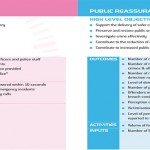Setting targets in performance measurement: how do numbers work?
Setting, monitoring targets and understanding the implications of their dynamics is not as simple as it might seem. In order to do this properly and with maximum benefits, it is important to ensure you have the following elements narrowed down:
- Understanding the concept of „target”. Sometimes used interchangeably with terms such as objective or goal, a target represents a desired or minimum level of performance.
- Understanding the relevance and scope of targets in the context of performance management. Certain target levels can be used as levers to stimulate improvement, as they lock in commitments to achieve more.
- Involving employees. This facilitates their understanding of the process, while giving them a sense of ownership. As a result, targets are less likely of being set subjectively, in terms of what employees think they are likely to achieve (so that they are not penalised for not reaching a target), but set in terms of desirable levels of quality or quantity.
- Taking into consideration industry averages, these can help in assessing own performance. Sources such as the ones provided by well recognized research organisations J.D. Power & Associates can be helpful in providing valuable data in this respect.
- Using appropriate tools and instruments that convey information as accurately and detailed as possible.
Setting targets for targets’ sake is counterproductive.Some performance indicators are out of the control of the organization or staff. Others reflect the status, however do not warrant the establishment of a target.
Being linked to objectives and measures, targets should themselves be SMART: Simple, Measurable, Achievable, Realistic and Timely.
Some problems that might appear in the context of target setting and monitoring are the following:
- Lack of perseverance in monitoring targets over time; this is the only way to assess their impact on performance improvement. Over time, we have to realize whether we have set the correct targets and their correct interpretation (in terms of „traffic lights”).
- Lack of ownership or unreliable data.
- Targets working against one another.
Undoubtedly, whereas strategic visions can be difficult to communicate and embrace, breaking down the top goals into smaller concrete targets and creating the needed synergies will make the process of delivering them much easier.
References:
- Harvard Business: Tips for settting performance targets
- Idea.gov.uk: Target Setting – A Practical Guide
- Businesslink.gov.uk: Measure performance and set targets

Tags: J.D. Power & Associates, Objectives, Performance Measurement, Targets






